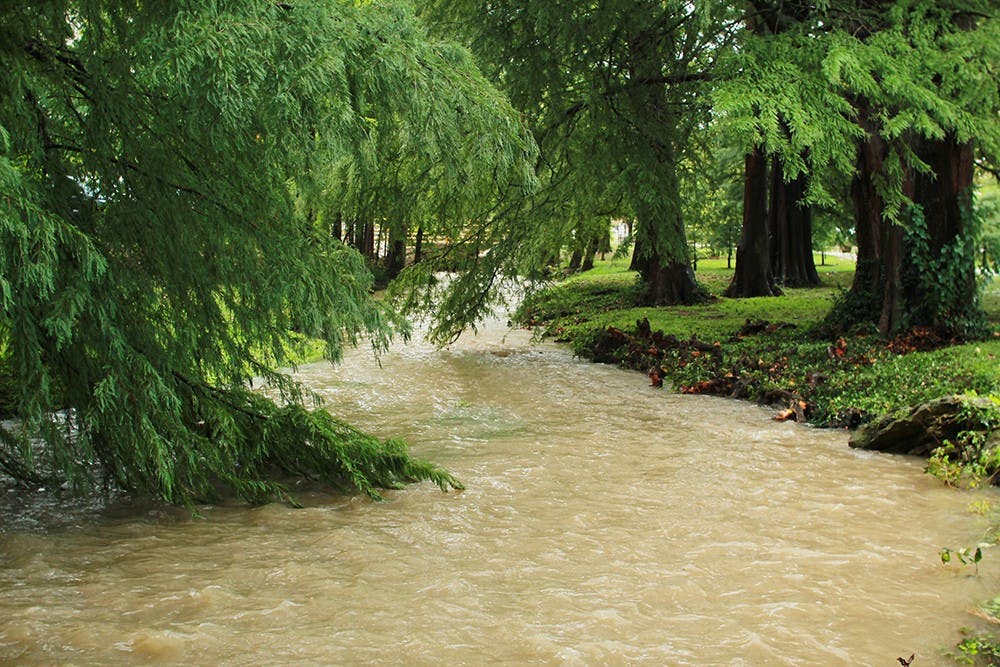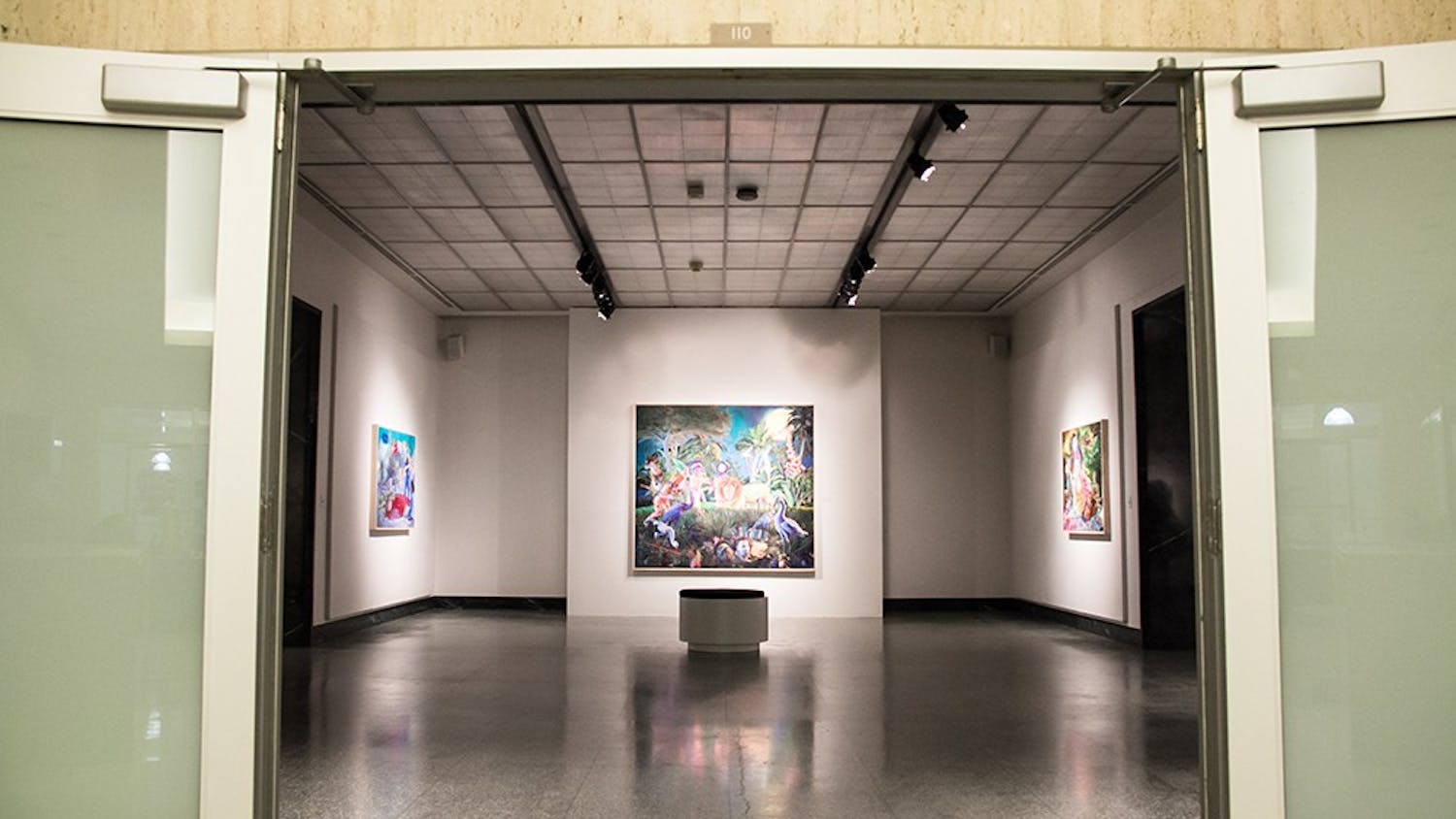It ribbons through wooded hollows and dense wetlands, through open meadows and under footbridges that ferry students to towering academic halls.
People have been calling it the Mighty Jordan since at least the 1890s, but it was officially christened Spanker’s Branch until 1994.
In 1919, a doomed bill was introduced in the Indiana statehouse to dredge the Jordan River, so it could be “made navigable for river, lake, and ocean steamers.” Theodore Rose, namesake of IU’s Rose Well House, proposed to dam the river to create a Jordan Lake in the 1920s.
Biology classes use it as an outdoor lab. Sunbathing women sit on the limestone rocks lining the banks to catch the first rays of spring. Art students lean against trees to sketch the Jordan’s gentle curves.
“Per cubic inch of water, probably more love has been made on the banks of the Jordan than any other stream in the world,” columnist Cliff Robinson said in the Indiana Daily Student in 1978.
* * *
It’s a dark night on a fall evening in Bloomington. In the river, a muskrat glides through the water. A short way upstream, a skunk forages around the grassy bank. Nocturnal minnows dart under bridges in the cool water.
The Mighty Jordan, celebrated by students and faculty, is a living ecosystem. The river is home to minnows and small bullhead fish, frogs and turtles, insects such as beetles and mayflies and mosquitos and water striders. It’s a water source for deer, skunks, possums, muskrats, raccoons and other land-dwellers.
For decades, the water quality of the river has been maintained to keep the river’s ecosystem healthy and clean. In the early 1970s, the IU Board of Trustees ordered a report on the quality of the water.
“Such incidents of alleged pollution of the Jordan River can never be eliminated as long as the Jordan River remains the only storm sewer traversing on campus,” one 1972 report read. “So, at some time the ecologists must face reality.”
Mike Girvin, manager of the Campus Division, has another philosophy. He tries to keep the river as clean as possible. Drainage pipes may look unsightly, he says, but they carry clean water condensation from the chiller units on surrounding buildings.
“It’s a very environmental campus,” Girvin said. “We’re very sensitive to impacts to the stream.”
* * *
Thunder claps before a late summer storm. Thick drops of water plop in the shallow water, spreading concentric rings across the surface.
In the shadow of Franklin Hall, small stacks of rock and stone dot the low river bed. The sculptures, crafted by local designer Patrick Siney, have been here only a few weeks but are already a playground for small fish and the butterflies dancing around the larger stones.
“This is gone by tomorrow,” Siney said from the bank above. “It will all be completely washed away. You get one-sixteenth of an inch, this floods up a foot and a half.”
To get out of the surprise storm, Siney moves to a dry patch under a grove of cypress trees at the edge of Dunn Meadow on the bank of the Jordan. It is one of his favorite spots on the river. Within a half-hour, the river becomes a dark brown rage of water and surf, engulfing the sculptures and flushing them into the dark culvert beneath the city.
When it rains in Bloomington, it all pours through the Jordan. Thick soil means water takes the path of least resistance through campus, straight down the Jordan River.
When it floods, intrepid students sometimes take to the river, tempting the fast-moving water, churning over large rocks and dodging under low bridges.
It’s a dangerous stunt. Just ask John Howard. As a student, Howard was swept under the Indiana Avenue bridge in 1994 while playing in the river during a rainstorm. It took him 18 minutes to travel the three-quarter mile culvert. He tumbled down the tunnel, at parts only 30 inches tall. He was sucked underwater when the underground culvert took a sharp turn, but finally came out at the end of the pipeline.
“He was very lucky,” Girvin said. “It can be very dangerous.”
As more water falls from the sky in an Indiana thunderstorm, the river gets stronger and faster, breaking its banks and flooding parts of campus. Its powerful current rips through hollows and wetlands, through meadows and under footbridges that ferry students to towering academic halls.





